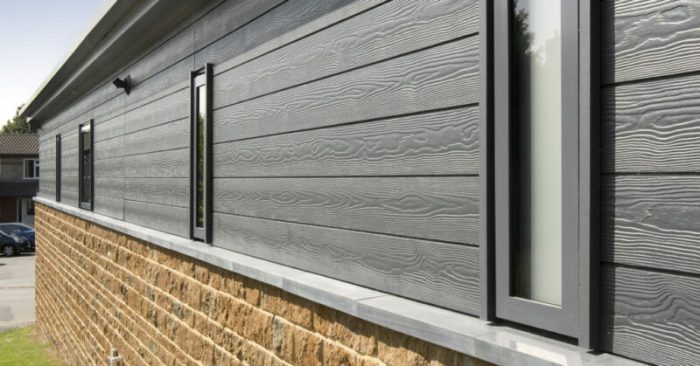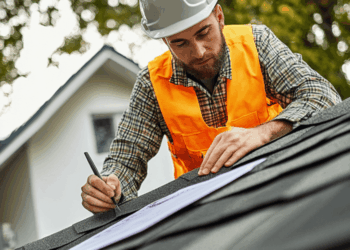Embarking on the journey of Home Siding Replacement Near Me: Top Vinyl and Fiber Cement Options, this introductory paragraph aims to draw in the readers with an engaging overview of the topic, setting the stage for what's to come.
The second paragraph will delve into specific details and insights about the subject matter.
Exploring Vinyl Siding
Vinyl siding is a popular choice for homeowners looking to enhance the appearance and functionality of their homes. Let's delve into the key aspects of vinyl siding to understand its benefits and features.
Comparing Durability
When it comes to durability, vinyl siding is known for its resilience against harsh weather conditions such as rain, snow, and UV exposure. Compared to materials like wood or aluminum, vinyl siding requires minimal maintenance and is less prone to rotting, warping, or fading over time.
Benefits of Choosing Vinyl Siding
- Low Maintenance: Vinyl siding is easy to clean and does not require frequent painting or staining, saving homeowners time and money on upkeep.
- Cost-Effective: Vinyl siding is a budget-friendly option compared to other materials, making it an attractive choice for those looking to improve their home's exterior without breaking the bank.
- Energy Efficiency: Insulated vinyl siding can help improve the energy efficiency of a home by reducing heat loss during colder months and maintaining a comfortable indoor temperature.
Color Options Available
Vinyl siding offers a wide range of color options to suit different architectural styles and personal preferences. Whether you prefer a classic neutral tone or a bold statement color, there is a vinyl siding color to complement your home's aesthetic.
From shades of white and gray to vibrant blues and greens, homeowners can easily find the perfect hue to enhance their curb appeal.
Fiber Cement Siding Features
Fiber cement siding is a popular choice among homeowners due to its durability, versatility, and low maintenance requirements. This type of siding is known for its ability to mimic the look of wood, brick, or stucco while offering superior protection against the elements.
Key Features of Fiber Cement Siding
- Durability: Fiber cement siding is resistant to rot, insects, and fire, making it a long-lasting option for homes.
- Versatility: This siding can be painted in a variety of colors or pre-finished to suit different architectural styles.
- Low Maintenance: While regular cleaning is recommended, fiber cement siding does not require frequent painting or staining like wood siding.
- Weather Resistance: It can withstand harsh weather conditions, including high winds, heavy rain, and extreme temperatures.
Maintenance Requirements for Fiber Cement Siding
- Cleaning: Regularly clean fiber cement siding with a hose and mild detergent to remove dirt and debris.
- Inspection: Periodically inspect the siding for any cracks, chips, or signs of damage that may need repair.
- Repainting: While fiber cement siding holds paint well, it may need to be repainted every 10-15 years to maintain its appearance.
Environmental Impact of Fiber Cement Siding
Fiber cement siding is considered a sustainable building material due to its long lifespan and minimal maintenance requirements. Compared to other siding materials, fiber cement has a lower environmental impact in terms of production waste and energy consumption. Additionally, fiber cement siding is recyclable and does not release harmful chemicals into the environment, making it an eco-friendly choice for homeowners.
Installation Process
When it comes to replacing home siding, the installation process involves several key steps to ensure a successful outcome. From preparation to finishing touches, each phase plays a crucial role in the overall result.
General Steps Involved in Replacing Home Siding
- Preparation: This includes removing the existing siding, inspecting the underlying structure, and preparing the surface for the new siding.
- Installation: The new siding is carefully installed according to manufacturer guidelines, ensuring proper alignment and secure attachment.
- Trim and Detailing: Trim pieces and other details are added to enhance the appearance and functionality of the siding.
- Finishing Touches: The final touches, such as caulking, painting, or sealing, are applied to complete the installation.
Tips for Finding Reputable Contractors for Siding Replacement
- Ask for Recommendations: Seek referrals from friends, family, or neighbors who have recently had their siding replaced.
- Check Credentials: Verify that the contractor is licensed, insured, and has a good reputation in the community.
- Get Multiple Quotes: Compare quotes from different contractors to ensure you are getting a fair price for the project.
- Review Past Work: Look at examples of the contractor's past work to gauge their quality and attention to detail.
Permits and Regulations for Homeowners
- Check Local Regulations: Before starting any siding replacement project, be sure to check with local authorities about any permits or regulations that may apply.
- Comply with Building Codes: Ensure that the new siding meets building codes and regulations to avoid any issues down the line.
- Environmental Considerations: Be aware of any environmental regulations that may impact the type of siding you choose or the installation process.
Cost Considerations
When it comes to home siding replacement, cost is a significant factor to consider. Both vinyl siding and fiber cement siding have their own installation costs and additional expenses that homeowners should be aware of.
Comparing Vinyl and Fiber Cement Siding Costs
- Vinyl siding is generally more affordable than fiber cement siding in terms of material and installation costs. On average, vinyl siding installation costs range from $4 to $7 per square foot, while fiber cement siding installation costs can range from $6 to $11 per square foot.
- However, keep in mind that the durability and longevity of fiber cement siding may offset the initial higher cost compared to vinyl siding in the long run.
Additional Costs during Siding Replacement
- Homeowners may incur additional costs during the siding replacement process, such as removing and disposing of old siding, repairing any underlying structural damage, and painting or finishing the new siding.
- Other potential additional costs include permits, debris removal, and any unforeseen issues that may arise during the installation process.
Tips for Budgeting and Financing
- Before starting the project, get multiple quotes from different contractors to compare pricing and services offered.
- Set aside a contingency fund of about 10-20% of the total project cost to cover any unexpected expenses that may arise.
- Consider financing options such as home improvement loans, HELOCs (Home Equity Line of Credit), or financing plans offered by siding manufacturers or contractors.
Conclusive Thoughts

Bringing everything together, the concluding paragraph will provide a compelling summary of the discussion, leaving a lasting impression on the readers.
Question & Answer Hub
How does vinyl siding compare to other materials in terms of durability?
Vinyl siding is known for its durability, outperforming many other materials in terms of longevity and low maintenance requirements.
What are the key features that make fiber cement siding a popular choice?
Fiber cement siding is favored for its durability, resistance to rot and insects, and its ability to mimic the look of wood without the maintenance issues.
What are some tips for finding reputable contractors for siding replacement?
When looking for contractors, it's advisable to seek recommendations, check reviews, ask for references, and ensure they are licensed and insured.
How does the cost of vinyl siding installation compare to fiber cement siding?
Typically, vinyl siding installation is more cost-effective than fiber cement siding, but the latter offers a longer lifespan and higher durability.
What additional costs might homeowners incur during the siding replacement process?
Additional costs may include permits, disposal of old siding, any necessary repairs to the underlying structure, and possible upgrades or customization.











